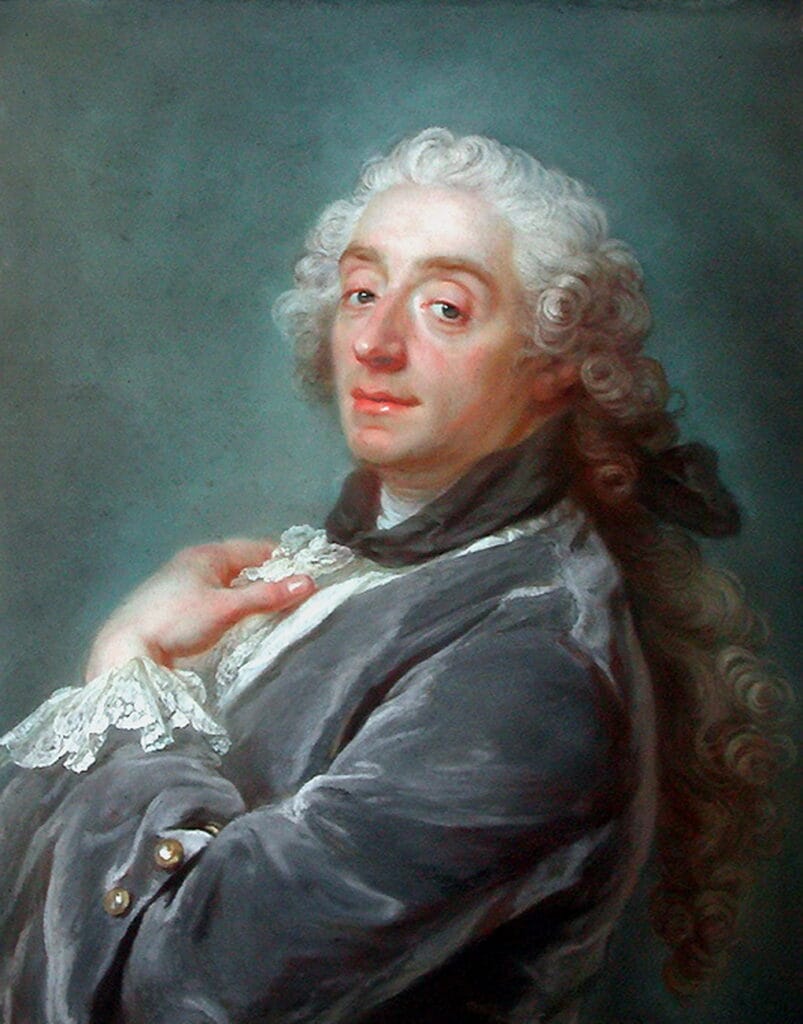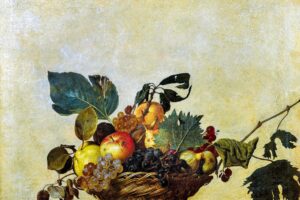Imagine stepping into a beautifully decorated room, full of books, art, and music, where elegance and intellect meet in perfect harmony. In this enchanting portrait from 1756, French painter François Boucher introduces us to Madame de Pompadour, a remarkable woman known not only for her beauty but also for her sharp mind, refined taste, and significant influence at the court of King Louis XV.
A Graceful Presence
Madame de Pompadour sits comfortably yet gracefully, surrounded by her favorite things—books, music, and art—telling us about her personality and interests:
- An Elegant Lady: She wears a luxurious silk gown decorated with delicate floral patterns and soft pastel colors, beautifully reflecting the graceful Rococo style. Her posture is poised yet relaxed, showing both confidence and ease.
- A Thoughtful Gaze: Holding a sheet of music or perhaps an important letter, Madame de Pompadour gazes thoughtfully to the side, as if something or someone has caught her interest. Her expression is gentle, intelligent, and quietly confident.
A World of Culture and Art
François Boucher carefully places details around Madame de Pompadour that speak volumes about her intellect and refined taste:
- Books and Knowledge: Beside her are neatly arranged books, symbolizing her love of reading and learning. Madame de Pompadour was known for her patronage of arts and literature, and these books remind us of her intellectual curiosity and sophistication.
- Music and Creativity: A beautifully crafted guitar rests behind her, hinting at her musical talents and appreciation. The papers in her hands further suggest a love of music or perhaps her involvement in creative pursuits.
- Art and Beauty: In the background, we see luxurious furnishings, golden accents, and a painting on the wall, illustrating her deep appreciation of fine art and aesthetics.
Madame de Pompadour
François Boucher painted Madame de Pompadour not simply as a beautiful woman but as a thoughtful, cultured individual with her own interests and intelligence. His soft, skillful brushstrokes and warm, harmonious colors beautifully capture her refined personality, making this portrait both elegant and insightful.
This captivating painting celebrates Madame de Pompadour’s influential role in French society, highlighting her elegance, wisdom, and passion for the arts. Through this portrait, Boucher invites us into the sophisticated and inspiring world of one of history’s most intriguing women.
About Artist

François Boucher (1703–1770) was a French painter, a dominant figure of the Rococo art movement. He was the most celebrated artist of his time, serving as the official court painter to King Louis XV and working closely with the king’s chief mistress and art patron, Madame de Pompadour. His style is the very essence of Rococo: playful, sensuous, and highly decorative, focusing on mythological, allegorical, and pastoral scenes.
Artistic Style and Legacy
Boucher’s style is characterized by its lighthearted and charming nature, a direct contrast to the more somber and dramatic tones of the Baroque. His paintings are known for:
- Sinuous Lines and Curves: He preferred soft, flowing lines over the rigid geometry of earlier art.
- Pastel Color Palette: He used a delicate range of light blues, pinks, yellows, and greens.
- Playful Subject Matter: He often depicted scenes of love, mythology, and idyllic country life, often with a hint of eroticism.
Boucher’s artistic influence was immense. He was a master of many mediums, including tapestry design, and his work perfectly captured the refined tastes and luxurious lifestyle of the French aristocracy before the Revolution.
Notable Artwork
- La Toilette (c. 1742): A prime example of his intimate genre scenes, it depicts a woman at her dressing table, a subject that was popular in Rococo art.
- The Mysterious Basket (c. 1748): This is a work with a playful, ambiguous title, characteristic of his whimsical style.
- The Fountain of Love (c. 1748): A mythological and allegorical scene celebrating love, a classic Rococo subject.
- The Bird Catchers (c. 1748): Part of a series of idyllic pastoral scenes, this work exemplifies his charming depictions of country life.
- Spring (1755) from a series titled “The Four Seasons”: This work was created as part of a decorative set for Madame de Pompadour.
- Pastoral Scene (c. 1735): Boucher painted many similar scenes of shepherds and shepherdesses in idyllic settings, a cornerstone of his work.
- Madame de Pompadour (1756): One of his most famous portraits. It shows his patron in an opulent, relaxed setting, surrounded by objects that reflect her intellect and status.
- Les Sabots (c. 1768): Also known as “The Clogs,” this is another pastoral scene, showing a country girl in an idealized setting.
- A Lady on Her Day Bed (1743): This intimate portrait shows a woman in a relaxed, private moment, a popular theme in Rococo art that celebrated luxury and leisure.



